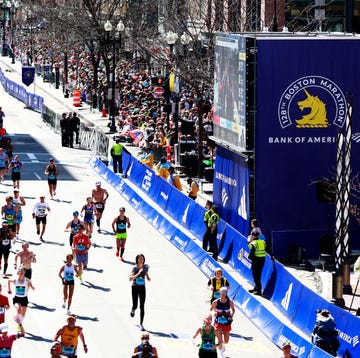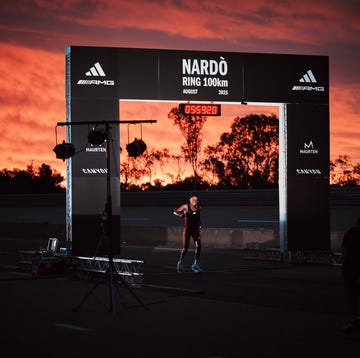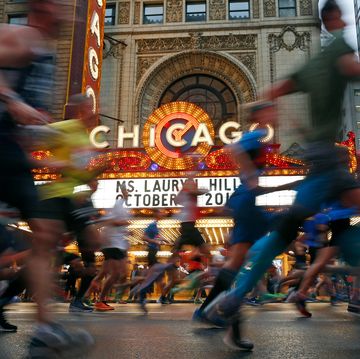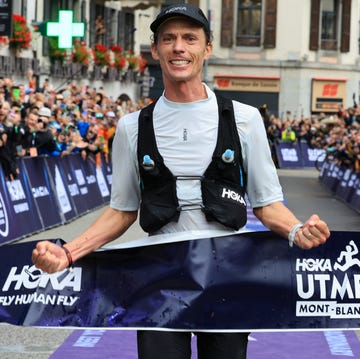This much is straightforward: Except for marathoners, the U.S. Olympic Track and Field Trials is the selection meet for the team that will compete in August at the Paris Olympics.
Part of the appeal of the Trials, which will be held June 21-30 in Eugene, Oregon, is its emphasis on high-stakes performances. For the most part, the top three placers in each event will represent the U.S. in Paris.
Often, however, there are exceptions, because someone finishing in the top three doesn’t have the required Olympic qualifying standard. There will likely be more exceptions than usual at the 2024 Trials. Below we’ll explain how to know who will make the Olympic team.
What Are Your Qualifications?
For guaranteed entry to the Olympic Trials, athletes need to have met a qualifying standard in their event. In some events, such as the women’s and men’s 10,000 meters, athletes who don’t have the Trials standards have been allowed into the meet to fill out the fields. Consider performances that got someone entry into the Olympic Trials to be at least national-class marks.
These Olympic Trials standards, which were set by USA Track and Field (USATF), are separate from—and easier than—the automatic Olympic qualifying standards. Set by World Athletics, track and field’s international governing body, the Olympic qualifying standards generally require a world-class performance.
In many events at the Trials, several of the top qualifiers have the Olympic standard. For example, 12 entrants in the men’s 200 meters have the Olympic standard of 20.16. And it’s conceivable that someone currently lacking the standard could run it at the Trials. In a deep event like that, team selection is usually straightforward—the top three at the Trials are almost certainly your U.S. Olympians in that event.
Things get trickier when fewer Trials entrants have the Olympic standard. Consider the men’s 10,000 meters. The automatic qualifying time standard for the Olympic Trials is 27:45. Only eight men met that standard, so USATF filled the remaining 16 spots with the fastest non-auto-qualifiers. (Ryan Johnson snagged the final spot with his time of 28:17.) But of the 24 men in the field, only three—Grant Fisher, Nico Young, and Woody Kincaid—have the automatic Olympic qualifying standard of 27:00. Given that only five U.S. men have ever broken 27:00, it’s highly unlikely that anyone in the Trials race who doesn’t have the Olympic standard will run that time in Eugene.
The upshot: Johnson or someone else lacking the Olympic standard could run the race of his life and place in the top three, but would probably not be named to the Olympic team.
This scenario has played out at previous Trials. In 2012, the first three finishers in the women’s 10,000 were Amy Hastings (now Cragg), Natosha Rogers, and Shalane Flanagan. Hastings had the Olympic standard, so she made the team. Rogers didn’t, and therefore didn’t make the team. Flanagan had the standard, but she had already made the team in the marathon and opted not to double at the Olympics. Only two other women in the field, Lisa Uhl and Janet Cherobon-Bawcom, had the Olympic standard. They placed fourth and eighth, respectively, but they literally could have walked and been the final two finishers, and they still would have made the team.
That was an extreme example, but it illustrates a key point: USATF’s policy is to send as full a team as possible. If the top three finishers don’t have the Olympic standard, then USATF goes down the order of Trials finishers until it reaches three athletes with the Olympic standard.
The Rankings Wrinkle
Again, there’s precedent for athletes other than those in the top three to make the Olympic team. But while it may have seemed strange in 2012 for the fourth and eighth finishers in the women’s 10,000 to take a victory lap, at least it was known immediately that Uhl and Cherobon-Bawcom were Olympians. In 2024, it’s possible that we might not know the full Olympic team until a week after the Trials.
That’s because, in addition to automatic qualifying standards, World Athletics also grants Olympic qualifiers to athletes with a high enough score in its world rankings. For example, when this article was published, Paul Chelimo’s ranking in the 10,000 counted as an Olympic qualifier. So if he were to place in the top three in that event in the Trials, he would most likely make the Olympic team, because USATF considers a high enough world ranking as good as the Olympic auto qualifying time.
We say “most likely” instead of “certainly” about Chelimo for good reason. There are two aspects of the rankings that could frustrate fans looking for immediate gratification from Trials results—the rankings are fluid, and the final rankings won’t be posted until July 7.
The rankings are fluid in that the Olympic qualifying period is open until June 30 (which happens to be the final day of the Trials). Performances at the Trials and other meets could move athletes into or out of contention for the limited number of Olympic spots available in a given event. It’s conceivable, but not likely, that Chelimo could place in the top three at the Trials but be surpassed in the world rankings by enough runners from other countries that, as of June 30, his ranking no longer counts as an Olympic qualifier.
What’s the significance of July 7, given that the Olympic qualifying period ends on June 30? World Athletics has built a few steps into the rankings process. On July 2, it will confirm the list of athletes whose ranking gets them an Olympic qualifier. Those athletes have until July 4 to decline the Olympic spot. Only after that process will World Athletics publish the final rankings on July 7. In our Paul Chelimo example, USATF would include him on the initial team roster, but—cliché alert—out of an abundance of caution, wouldn’t officially deem him a 2024 Olympian until the final rankings are published on July 7.
At the Trials, rankings are most likely to matter in the women’s 10,000. The only entrant with the automatic qualifying time of 30:40 is Weini Kelati. (American record-holder Alicia Monson also has the time standard but is recovering from surgery.) As of this writing, only two other entrants, Katie Izzo and Fiona O’Keeffe, have a ranking high enough to count as an Olympic qualifier. Marathon Trials champ O’Keeffe won’t run the 10,000 at the Trials. Izzo’s world ranking stems from cross country performances; her Trials qualifying time of 32:22 is the 25th fastest in the 26-woman field. Meanwhile, runners much faster than Izzo, such as NCAA champ Parker Valby, could move way up in the world rankings with a fast enough top-three place at the Trials. (The rankings allot points based on time and finishing place in a given race. An athlete’s ranking is the average of their two best scores.)
Other events where world rankings could play a large role include the men’s 1500 (only four entrants have the Olympic time standard) and the men’s 3,000-meter steeplechase (only two entrants have the time standard).
One Final Uncertainty
As if all of this scenario mapping isn’t enough, there’s the matter of top runners doubling at the Trials but potentially turning down an Olympic spot. As a hypothetical, consider Elle St. Pierre. She has the fastest U.S. times this year at 1500 and 5,000 meters. Say she first makes the 5,000 team on June 24 and also finishes in the top three in the 1500 on June 30. If she and her coach weren’t sure whether to attempt that same double at the Olympics, she could wait a day before informing USATF of her decision. (Athletes will be asked their intentions in post-race processing, but they aren’t required to give a definitive answer at that time.)
What to make of all this? First, remember that in most events, the top three at the Trials will be Olympians. Second, trust that in the murkier events, following our real-time, daily coverage of the Trials will keep you as informed as possible. And third, it’s fine to just sit back and enjoy great racing for its own sake.















